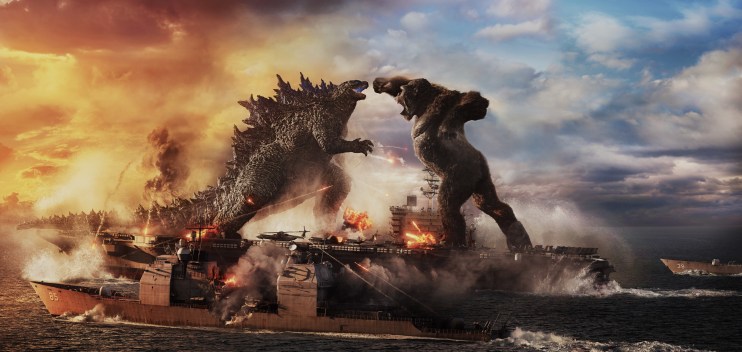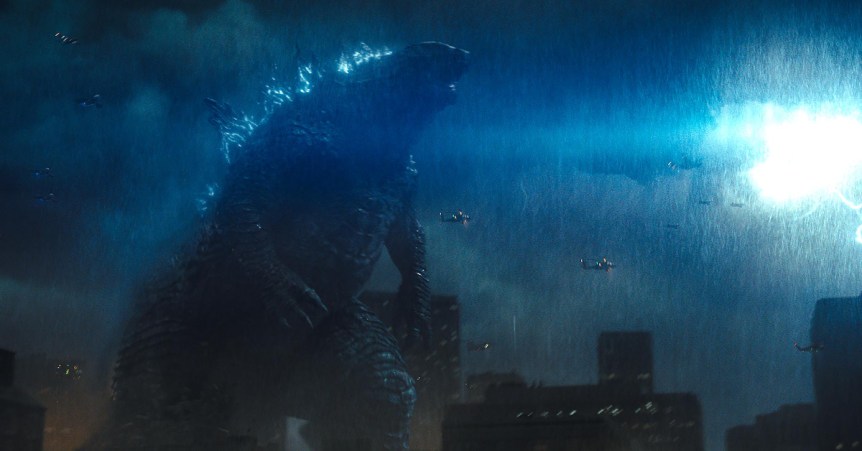Kaiju. It’s a word almost synonymous with Godzilla movies. If you have some years under your belt, chances are the large lizard, or King Kong, was your first taste of the genre. Or if you’re younger, Mighty Morphin Power Rangers might have been more of your jam.
Regardless of where you begin on the Kaiju timeline, audiences around the globe have enjoyed almost a century’s worth of giant monster FX. And while adolescent audiences may chuckle at the special effects and sets of the classics, there are still great takeaways for the modern-day 3D artist.
In this blog post, we’ll spotlight how some of the genre’s old-school techniques are more applicable now than ever, and reflect on potentially why they have an enduring legacy in the world of cinema.
Epic proportions
Kaiju movies wouldn’t be what they are if they didn’t have sets built to scale. The original Godzilla movie set was built at a 25-to-1 scale and featured detailed temples, bridges over water, and power lines ready for smashing.
After the atomic animal made its way to the silver screen in 1954, sets slowly evolved in successive Kaiju movies and TV shows with larger water features, taller buildings, mountains, and other landscapes but generally stayed visually consistent whether you were watching a Godzilla movie or Ultraman.
In the 1980s, things got much bigger, especially with The Return of Godzilla, which scaled the creature up to 260 feet. The sets were built for more detailed destruction, and the movie even included a robotic version of the behemoth.
We mention this increase in scale because learning about it is essential for 3D artists and animators. Digital water simulation works differently when a monstrous beast is in the scene. Add in another titan and things really start to get interesting … especially when they’re facing off against each other on water.
While making Godzilla vs. King Kong, Scanline VFX supervisor Bryan Hirota told CBR: “You have these two gigantic creatures so you have to maintain their scale, one of which has fur. You have to deal with considerations with their musculature and their skin, but they’re also on top of a very dynamic battlefield: They’re on ships traveling through the ocean, and they affect the ships with their weight. If they smash things on the aircraft carriers, the boats sink and they’re able to go under the water and above the water. You have a bunch of different factors and different simulations that you have to take into account throughout the whole sequence.”
But even if you keep your Kaiju on land, understanding the scale of a virtual set can help with camera placement. Ian Failes from befores & afters spoke with Godzilla x Kong: The New Empire visualization supervisor Jeremy Munro about this, highlighting the need to keep some trees large but shrink people and trees to a one-tenth scale to help frame things, at least in the early stages.

Break-neck momentum
Of course, scale isn’t only in relation to the Kaiju and the set design. It also gives animators a better understanding of how to add speed, weight, and impact to combat at a massive proportion.
Industrial Light & Magic’s Hal Hickel and his team had to solve the challenge of showing battles between Pacific Rim’s giant robot Jaegers and Kaiju that didn’t just appear to show slow-motion shots of punches and whipping tails.
The solution? Use virtual cameras on body parts. Hickel told USA Today, “That’s where we were able to convey speed. A fist-cam shot has you riding onboard at 150 miles an hour, as opposed to a wide shot that would show you the action at a slower pace.”
Its sequel, Pacific Rim: Uprising, ups the ante on the power and destruction of numerous robots and Kaiju in a futuristic Mega Tokyo. A massive city was needed to accommodate that many colossal wrecking machines in a single area, so Double Negative’s production team filmed in South Korea as a stand-in for Tokyo. Production visual effects supervisor Peter Chiang explained to VFX Voice, “If you think about it, in order for the Jaegers to run down a street, we needed a 70-foot-wide boulevard in order to accommodate just their legs,” said Chiang.
The more giants you have on screen, the more area they’ll need to adequately run, fly, and fall in. Otherwise, it’ll look like they’re sluggishly stepping from place to place. We recommend reading the entire article if you geek out on things like background plates and reference and drone photography as a starting point for creating digital buildings.
Building beasts on a budget
Long before Double Negative was digitally assembling Jaegers from the ground up, it teamed up with Tippett Studio on another Kaiju film set in New York City. Cloverfield took audiences by storm utilizing found-footage camera techniques to showcase the destruction evocative of real-life events.
Visual effects supervisor Kevin Blank told AWN that even though Cloverfield had a budget of only $25 million, a good portion of that went to VFX. If you haven’t seen the making of this movie, it’s worth reading the article to see how much green screen was used in places like the Brooklyn Bridge sequence. “What was created was basically a 150-foot stretch for the board planks, a few benches, and then lighting fixtures were in place where they would be on the bridge, but the railing, the lamps, and everything is CG,” said Blank. “In New York, we shot helicopter plates on the side of the Brooklyn Bridge to make the environment, but the actual structure of the bridge was 99% visual effects. The only thing that was not was the ground these people were walking on.”
The visual effects production crew did a remarkable job — and we haven’t even talked about the Kaiju yet. Later in the article, lead creature designer Neville Page explained his process for designing the creature, drawing digitally on a tablet using Adobe Photoshop, using clay, and sculpting with ZBrush.
Page notes, “For me, one of the most key moments in our collective brainstorming was the choice to make the creature be something that we would empathize with. It is not out there, just killing. It is confused, lost, scared. It’s a newborn. Having this be a story point (one that the audience does not know), it allowed for some purposeful choices about its anatomy, movement and, yes, motivations.”
Those motivations made for some very frightening scenes from a first-person camera perspective as rubble fell dangerously close to the movie’s main characters. Sure, the Kaiju is a big, scary monster, but the damage it leaves in its wake is downright terrifying.
Evolving the giant genre
Environment and creature VFX look so amazing today, it feels like the sky’s the limit for what’s to come in Kaiju films. The found footage genre was already in its prime by the time Cloverfield entered theaters, so there’s no telling if a new movie-making technique like virtual production will lead to a brand-new moviegoing experience.
Just look at YouTube content creators going from homemade stunt videos to doing something new with the possession horror genre in Talk to Me. As real-time technology like Unreal Engine continues to gain ground with 3D artists and animators, using pre-made assets like on TurboSquid along with AI-generated objects and sounds could enable small teams to make something we’ve never seen before.
Kaiju movies continue to be popular almost 100 years later, partially because they’ve been used as a way to talk about nuclear warfare and terrorism. But perhaps there’s something in the reptilian part of our brains that thinks it’s pretty cool to see two giant monsters go head-to-head (or fist-to-tail).
Only time will tell where the genre goes next. If it’s your dream to make a Kaiju movie, we hope you’ve found some of this advice useful. Many of the models on TurboSquid are built to a real-world scale, so that’s a great place to begin if you want to start creating a city made for destruction.
Want to make a Kaiju scene?
TurboSquid has giant monsters, cityscapes, trees, and more.

